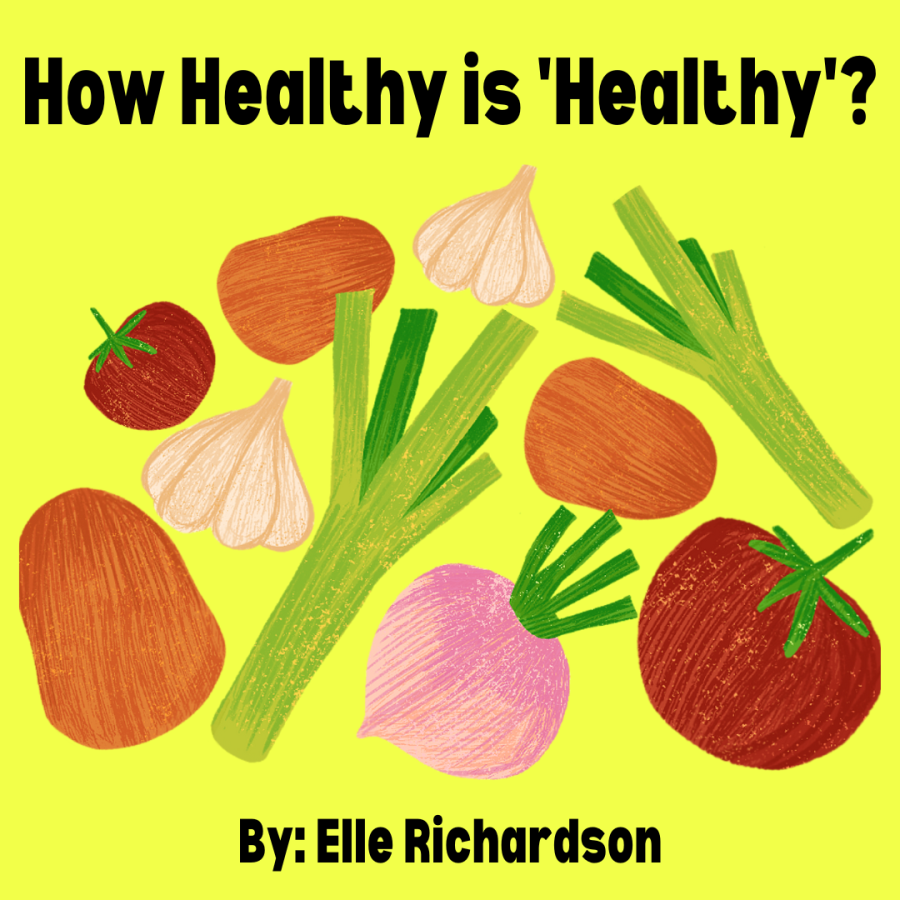How Healthy is ‘Healthy’?
December 12, 2022
All over America, there are thousands of different types of food. Nowadays, lots of “healthy” options can actually be harmful to both people’s health and the environment. While there has been lots of misinformation regarding which foods are healthiest for the environment, cutting out milk, limiting the amount of meat we eat, and becoming more informed about recent food trends and how credible they actually are has proven to be the best for the environment.

Raising cattle to produce milk is the cause of 3% of the greenhouse gasses in the world. Although this might sound minimal, this isn’t all farming or the factories pasteurizing the milk. This is simply the methane produced by cows themselves. Methane is one of the most dangerous greenhouse gasses and is one of the major causes of global warming as it traps UV rays in the Earth’s atmosphere. Raising cattle also takes up 33% of cropland which could be used for more productive produce, like soybeans, wheat, or cotton. These are much more beneficial to our community.

Although milk is high in nutritional value and includes necessary macronutrients and micronutrients, these can also be supplied by supplements, the best of which being soy milk. Humans get more calcium from fruit and vegetables than milk on a daily basis. The amount of milk humans drink already causes the over farming of cows, not even including their demand in the meat industry.
All red meat has a high fat content and can lead to diabetes and heart conditions if eaten on a regular basis and in large quantities. There have also been carcinogens found in red meat. Even if humans switched to mainly eating fish, the results would be disastrous for our environment. Overfishing and ocean pollution rates would skyrocket and the cost and resources spent to fish would be enormous. The emissions caused by boat fuel alone would raise the temperature enough to be noticeable.
Some will argue humans should eat more meat as it has a high nutritional value and is absorbed faster than vegetables. While red meat has high iron values, humans get iron from daily vitamins and vegetables as it is. Vegetables are very important to people’s diets, but there is a kerfuffle regarding whether or not organic ones are better.
There is a trend going around involving “healthy” organic foods, but they actually aren’t proven to be beneficial for people’s health as standards are lax and organic food takes more space to farm. Organic farms require 40% more land than conventional farms. There is almost no nutritional difference between organic foods and conventional foods and with the demand for organic produce rising, many farmers are using some questionable methods on their organic food.
Some argue that we should eat more organic food as it contains more antioxidants, uses less energy, and uses natural pesticides and fertilizers. Yet antioxidants have little proven health effects on humans, organic farms take up much more land and use more resources, and the natural pesticides and fertilizers are proven to be just as harmful as the synthetic ones conventional farmers use. Organic farming is harmful to the environment and costly to not only the farmers, but to everyone buying organic food.
Like all things, change takes time. If we want to get to a world where healthier options are the new normal, we have to implement some changes soon. These should include cutting out milk, limiting the amount of meat we eat, and becoming more informed about recent food trends and how credible they actually are. Changes like these would not only improve the environment, it would be beneficial to the health of mankind.








